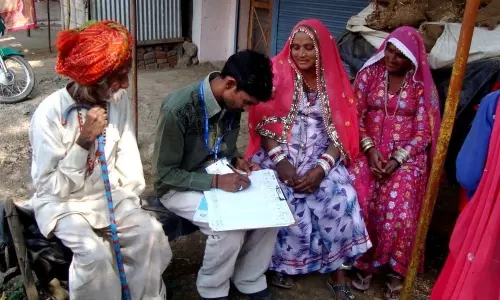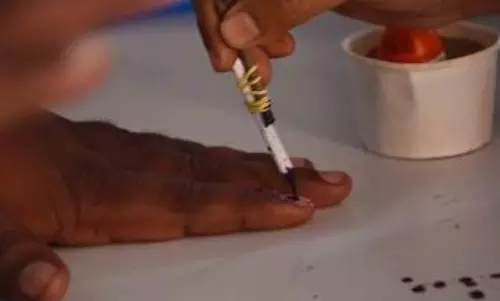
Is minimum marriageable age indeed the problem?
text_fieldsDuring his Independence Day address in 2019, Prime Minister Narendra Modi announced that necessary steps would be taken to control the population in the country. The announcement came after the PM made certain remarks about the population explosion in the country. However, there is neither such an 'explosion' in India nor a need for population control. Official figures show that our population growth rate (Total Fertility Rate) has been declining and the overall strength of the population is stabilizing. Racial prejudices, not statistics or documents, are often the spine of the hysterical politics of the Sangh Parivar. Naturally, Hindutva advocates gave great publicity to the discourse. Many Sangh Parivar leaders have publicly called for raising the age of marriage for Muslim girls and controlling population explosion. In his Independence Day address the following year, Modi raised the same issue in a different way. It was also about raising the minimum age of marriage for girls. In any case, the Union Cabinet has decided to raise the legal age of marriage for girls from 18 to 21, taking cognizance of two consecutive years of Independence Day speeches. An amendment to the law in this regard can be expected in the current session of Parliament itself.
The Union Cabinet is taking such a decision on the basis of a report submitted to the Niti Ayog by a study committee set up by the Union Ministry of Women and Child Welfare in June 2020. The study report was prepared after a committee chaired by former Samata Party leader Jaya Jaitly travelled to various parts of the country and held discussions with people from all walks of life. They visited 16 universities across the country; 15 voluntary organizations participated in the study. The committee was set up to look into issues such as gender equality, health of women and children, reduction of infant mortality, employment and education opportunities, and population control. In other words, the committee aims at a comprehensive study of the problems faced by women in general in our country. The committee submitted its report with a number of recommendations for the upliftment of women and enabling them to lead a prosperous life. Some of those suggestions were revealed by Jaya Jaitley herself yesterday. One of them is to ensure equality of opportunity for girls in education and employment. To this end, the committee recommends that polytechnic institutions be set up across the country exclusively for girls. In this way, girls will become financially self-sufficient as they reach adulthood. It is only after achieving this kind of financial self-sufficiency that one should think about marriage. In other words, the main recommendation of the committee is to ensure education for girls and thereby provide employment and financial security. For that, it is okay to get married at the age of 22. In addition, the committee has put forward proposals for the provision of nutritious food and schemes for promoting sex education. The government is now trying to solve the problem by raising the minimum age of marriage, setting away all these recommendations.
Look at how cleverly the government has subverted the proposal to ensure financial security for girls before marriage. The path to economic self-sufficiency is the systematic development of education, employment and health. The path to economic self-sufficiency is the systematic development of education, employment and health. Jaya Jaitly's committee has only re-emphasized that. In fact, a democratic government is obliged to ensure that all of this happens with the current minimum marriage age of 18 years. Having failed at it all these years, they recommended that the minimum marriageable age be raised by at least three more years, giving time to the woman to achieve financial independence. The government has now come up with a 'single solution' by raising the minimum age of marriage. The proponents of the 'Beti bachao, beti padao' slogan are telling women to wait for more years to achieve success. Recognising the reality, organizations, including the Democratic Women's Association, have come out against the central government's decision. They also demand that the age of marriage for girls remain fixed at 18, based on the National and Family Health Survey report that child marriage is declining in the country.
In short, the decision to raise the age of marriage is a shortcut to cover up a government's incompetence which has only provided unemployment and financial insecurity. There is another corridor along with this shortcut; of fascism, as usual. The new decision will take effect only when the personal laws are amended along with the Special Marriage Act and the Child Marriage Prohibition Act. In other words, the move is a step towards the uniform civil code, the declared policy of Hindutva. It is indeed important to identify the fascism in this silk-wrapped progressivism. The discussion about the minimum age of marriage can follow.






















